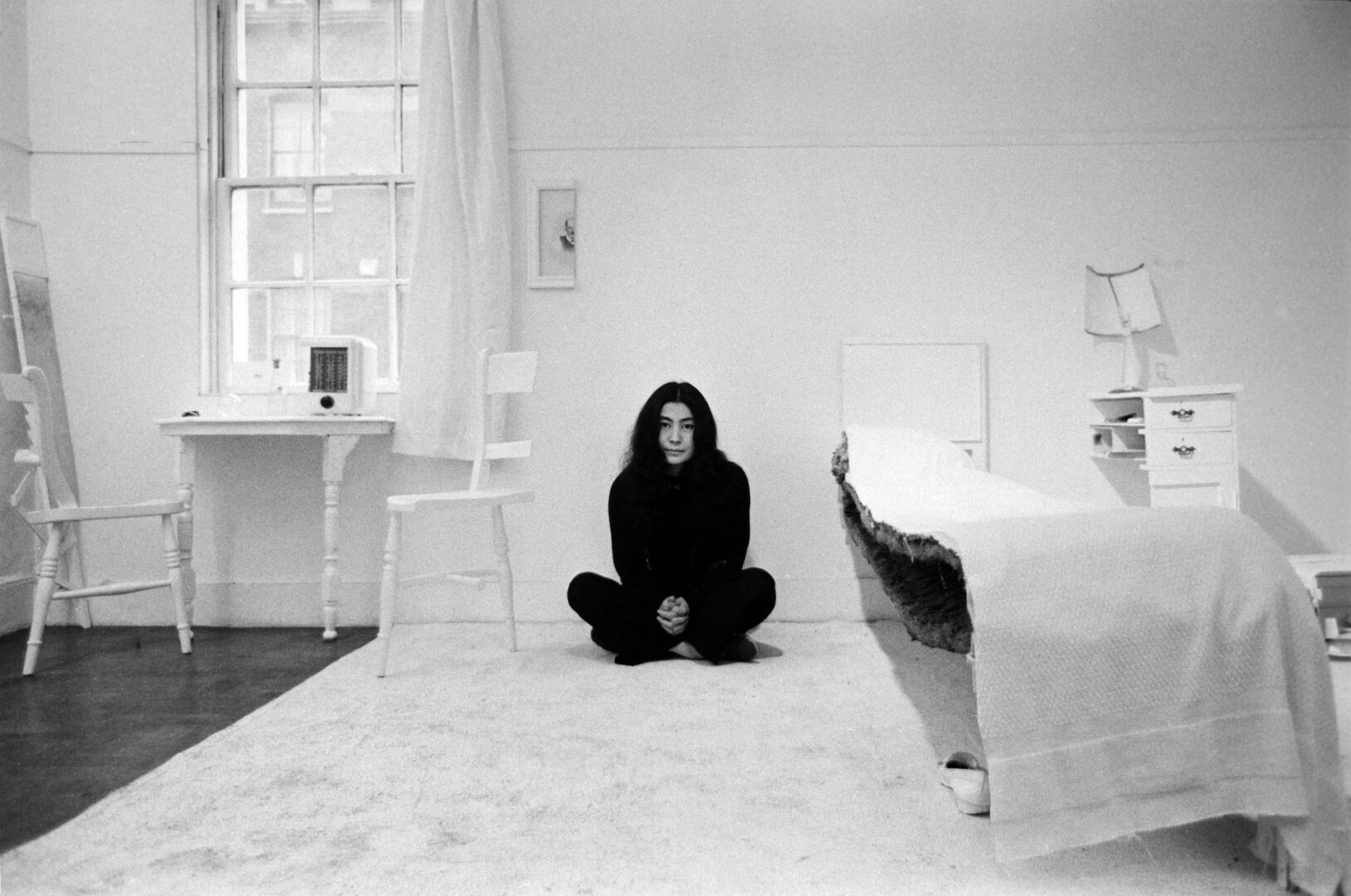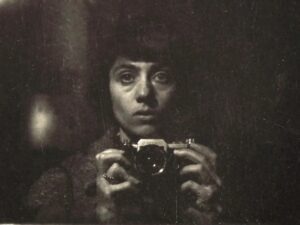Yoko Ono (b. 1933) has long occupied the liminal space between concept and action, thought and sensation. Her latest exhibition, Yoko Ono: Music of the Mind, now on view at Berlin’s Gropius Bau, offers a strikingly intimate journey through more than six decades of experimentation. There are over 200 pieces on view – this is the exhibition of all exhibitions. It spans instruction-based artworks, installations, scores, photography, film and music; the show is as much a meditation on inner landscapes as it is a reflection on the artist’s enduring call to action. “The only sound that exists to me is the sound of the mind,” Ono wrote in 1966. “My works are only to induce music of the mind in people … In the mind-world, things spread out and go beyond time.” This is a show not of spectacle, but of resonance — emotional, political and deeply human. From its title to its curation, Music of the Mind invites visitors into the realm of potentiality. Here, the ephemeral is foregrounded, and the viewer becomes co-creator. In a world saturated by noise, Ono’s whisper rings loud: art is an invitation, not a conclusion.
Greeted by The Blue Room Event (1966), one immediately enters a contemplative zone. Ono’s handwritten phrases line the space like soft commands, or riddles with no answers. They resist fixed interpretation and instead ask us to move inward. One phrase reads simply, “Imagine,” an echo of her most iconic collaborations — but it is the internal imagining, rather than the political slogan, that Ono asks us to embrace. “Because, first, there’s an idea,” Ono said in 2009. “And then we imagine that idea as a reality. Through the imagination, things do become reality – a physical reality.” This notion underpins much of the work on view. Her early Instruction Paintings (1960–61), first shown in a downtown New York loft, take the form of textual blueprints: poetic prompts for actions both real and metaphysical. Some are performative: Painting to Shake Hands (1961/2025) invites strangers to connect through a simple gesture. Others remain unfulfilled possibilities, like Painting to See the Skies (1961), which metaphorically opens the heavens.
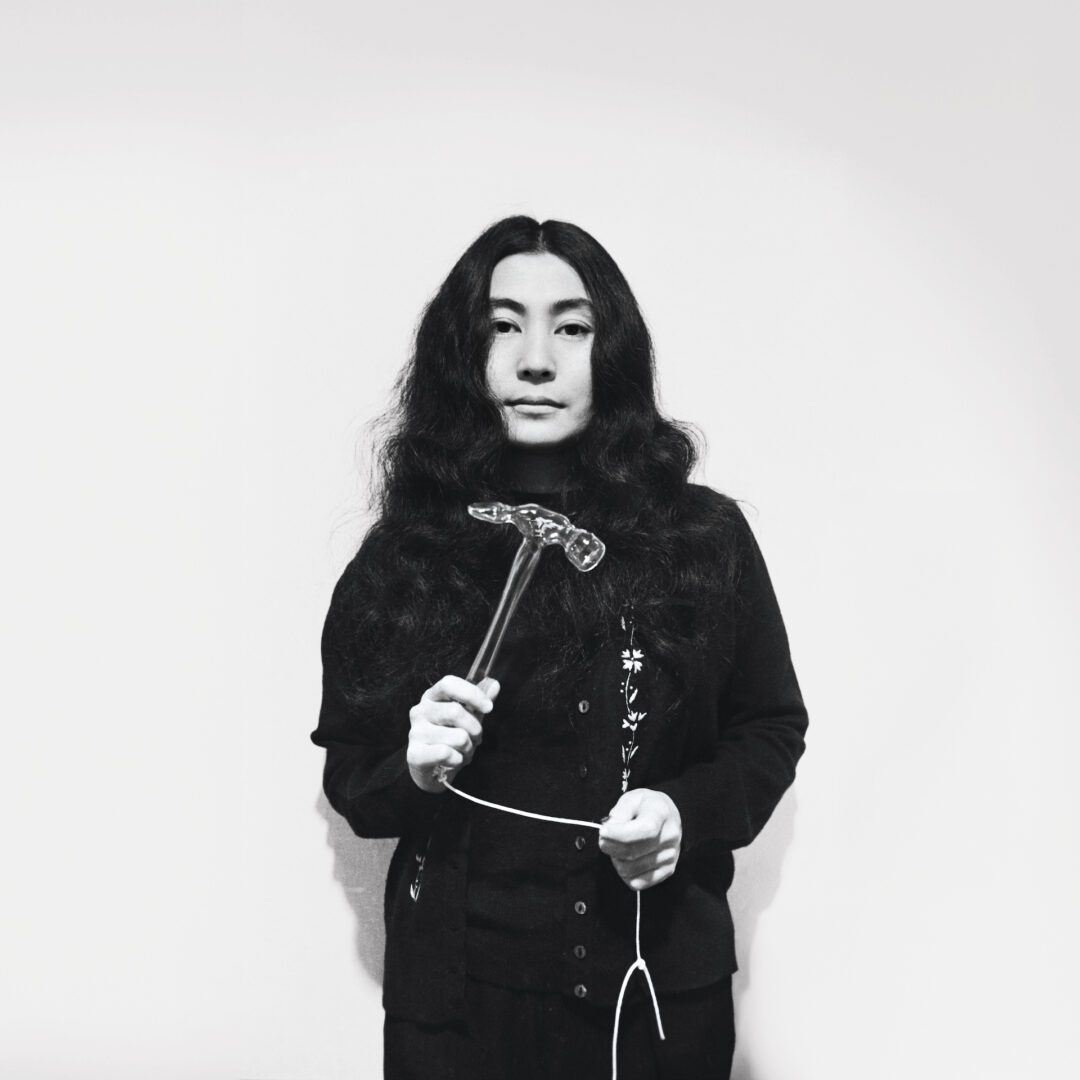
The exhibition foregrounds Ono’s radical redefinition of authorship. As she wrote in 2001, “I wanted to give an unfinished work for others to add to, not to merely repeat.” Participatory works like Bag Piece (1964/2025) – in which visitors can disappear within fabric folds – and Shadow Piece (1963/2025), where bodies merge as silhouettes, demonstrate her belief in the audience as vital collaborators. Historic installations such as Apple (1966), Ceiling Painting (1966), and Half-A-Room (1967) offer a rare chance to see works once deemed too subversive, or even absurd, for their time. There is an innate poetry in their sparseness — a bowl of air, a ladder to nowhere, a room of halved domestic objects. All speak to rupture, to longing, to transformation.
As always in Ono’s work, politics and poetics are never far apart. The banned FILM NO. 4 (“BOTTOMS”) (1966–1967), presented here alongside documentation of her pivotal speech at the Destruction in Art Symposium, brings into focus her pacifist commitments. Likewise, White Chess Set (1966) – a conceptual anti-war piece – offers a powerful metaphor for memory, conflict, and futility. Its instruction? “Play as long as you can remember where all your pieces are.”
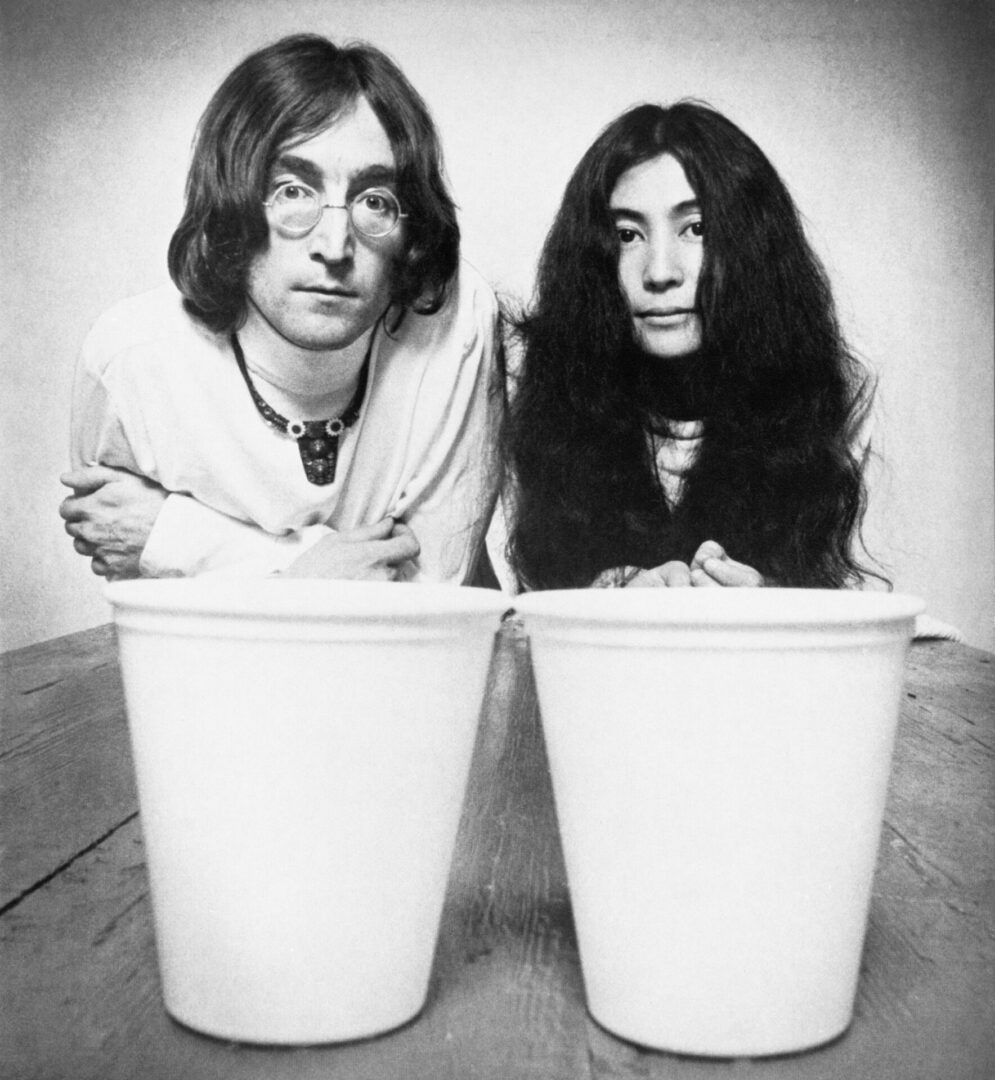
Ono’s feminist voice reverberates throughout the show, from Cut Piece (1964/2003) to Freedom (1970) and the hauntingly voyeuristic RAPE (1968–1969). These works force a confrontation with power, gender, and the politics of looking. A dedicated listening space gives further insight into Ono’s musical activism, featuring tracks like Sisters O Sisters (1972) and Woman Power (1973), songs that encourage women to “have courage” and “have rage.”
If the early works seem to break and remake form, the later ones heal and gather. My Mommy Is Beautiful (2004–2025), an evolving participatory piece filling an entire gallery, invites visitors to leave tributes to their mothers. Notes of grief, joy and longing paper the walls, forming a living monument to intergenerational love and loss. The emotional core of the exhibition beats quietly in works like SKY TV (1966/2025), broadcasting a live feed of the sky above Gropius Bau. The motif of the sky, a symbol of peace and refuge dating back to Ono’s childhood during wartime Japan, threads the exhibition with sublime consistency. It is both metaphor and memory, ever-present and ungraspable.
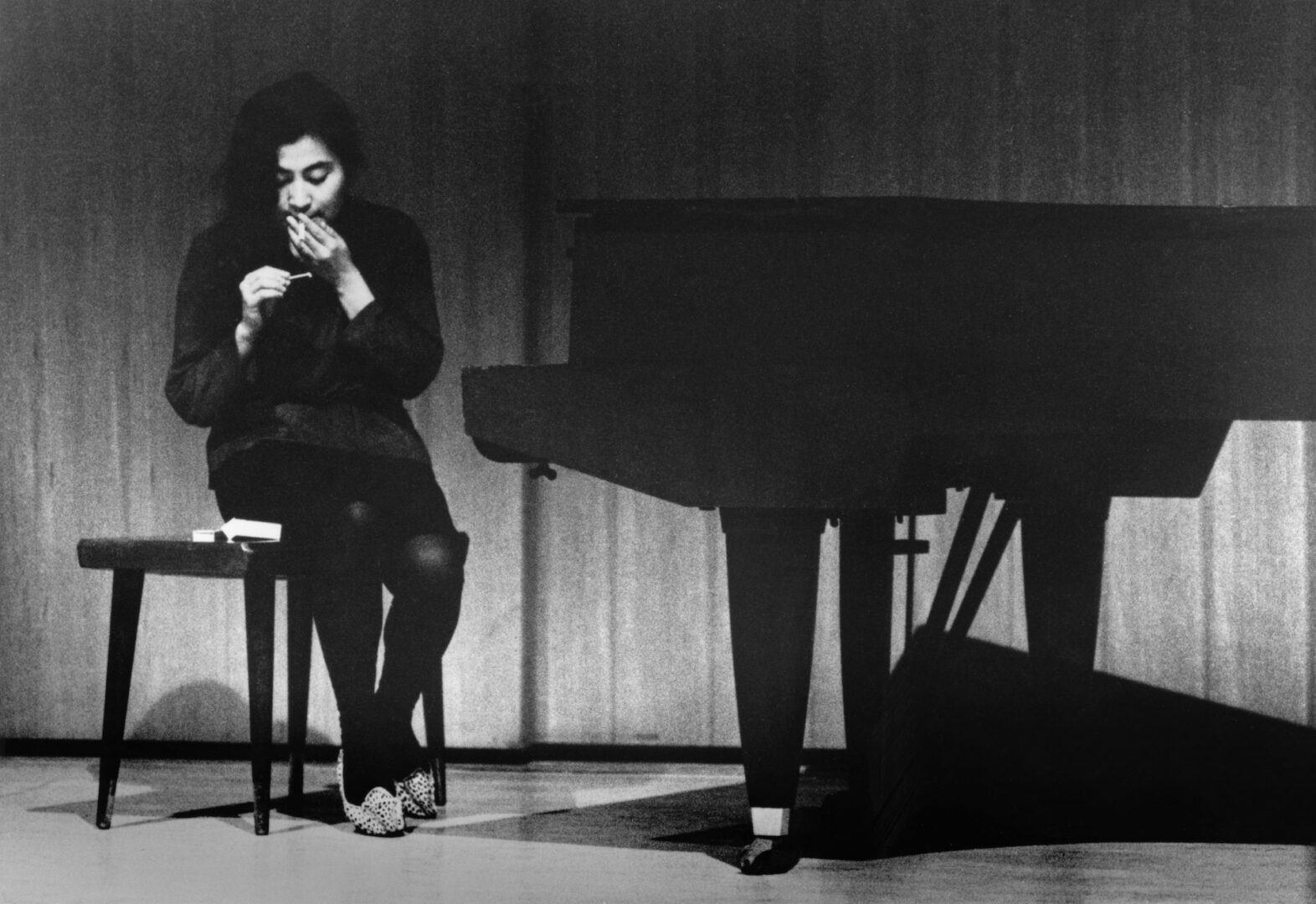
Peace, perhaps Ono’s most enduring theme, pulses visibly in Add Colour (Refugee Boat) (2016/2025), a collective installation where visitors paint over a boat and walls, contemplating displacement and solidarity. In the atrium, nine Wish Trees (1996/2025) bloom with handwritten hopes for peace. “After the exhibition,” the press release notes, “the wishes will be collected and returned to the artist, where they continue on in connection with her work IMAGINE PEACE TOWER in Iceland.”
Jenny Schlenzka, Director of Gropius Bau, affirms, “Yoko Ono’s playful and participatory approach holds the potential for unique encounters with art and one another. Her works, while often simple and intuitive on the surface, can be simultaneously complex, intellectually stimulating and deeply political.”
Yoko Ono: Music of the Mind is not merely a retrospective. It is a call — to imagine, to participate, to remember, to hope. From her early instruction pieces to her enduring message of peace, Ono reveals the power of art to be a bridge between minds, a tool of transformation. As she reminds us, “The job of an artist is not to destroy but to change the value of things. And by doing that, artists can change the world.” In Berlin, a city she once called “part of my body”, Ono’s presence feels more vital than ever.
Yoko Ono: Music of the Mind is at Gropius Bau, Berlin, until 31 August 2025.
Words: Anna Müller
Image Credits:
1. Yoko Ono in Half-a-Room, 1967, installation view, HALF-A-WIND SHOW, Lisson Gallery, London, 1967. Photo © Clay Perry / artwork © Yoko Ono.
2. Yoko Ono with Glass Hammer, 1967, HALF-A-WIND SHOW, Lisson Gallery, London, 1967. Photo © Clay Perry / artwork © Yoko Ono.
3. Yoko Ono and John Lennon, cover for catalogue for Acorn Event, 1968. © Yoko Ono, photo: Keith McMillan.
4. Yoko Ono, Lighting Piece, 1962, performed by Yoko Ono as part of Works of Yoko Ono, Sogetsu Art Center, Tokyo, 24 May 1962. © Yoko Ono, photo: Yasuhiro Yoshioka.


